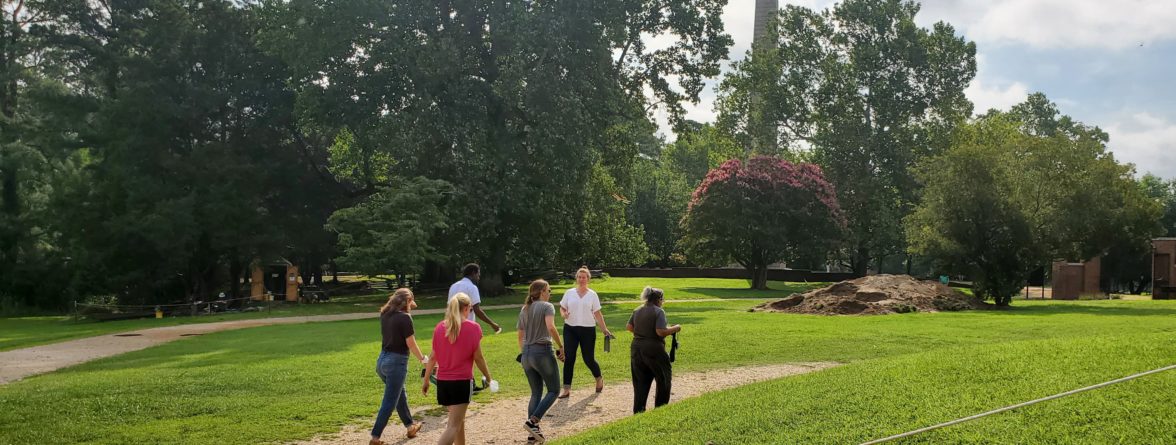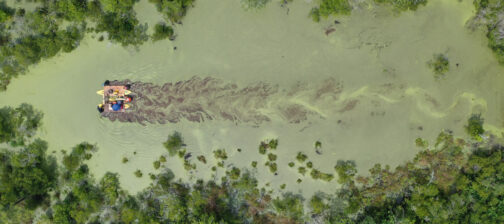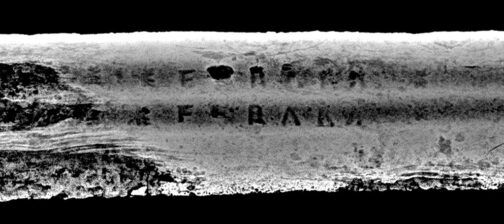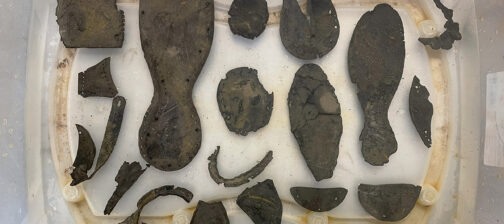
In 2019, I was offered the opportunity to apply to an NEH funded fellowship, the Digital Archaeological Archive of Comparative Slavery (DAACS) Summer Institute. This program is primarily an in-depth study of material culture and an opportunity to become certified to use the DAACS cataloging program. While Jamestown currently uses a different digital artifact catalog, this was still a valuable opportunity for me as a curator of the Jamestown collections. Despite a delay due to the Covid-19 pandemic, the program took place in-person over four weeks in the summer of 2022.
With over 3 million artifacts in our collection, digital data is one of the best ways to research artifacts excavated from Jamestown. Various artifact attributes, when assessed as part of a large assemblage, can highlight patterns or provide support for hypotheses that researchers pose about life in early 17th-century Virginia. While Jamestown has many incredible and unique artifacts that individually interest and amaze us, broader groupings of materials can highlight subtleties about the site and the people that occupied it and we are able to investigate research questions that may not be answerable from one miraculous find.
One of the primary motivators behind the DAACS database is to make data from different sites of enslavement comparable, to not only analyze individual sites, but to facilitate collaboration among scholars. Since 2000, DAACS has worked with numerous sites, beginning with archaeological finds from Thomas Jefferson’s Monticello and now includes multiple sites throughout the Chesapeake region, the Carolinas, and the Caribbean. Archaeological evidence from across these regions has contributed to the growing body of knowledge of the slave-based society that developed in the Atlantic World during the colonial and antebellum periods.
The DAACS Summer Institute gave me the opportunity to learn from my colleagues and to discuss Jamestown’s role in the early years of enslavement in British North America. As part of the program, the entire group visited Jamestown and went on the First Africans tour with Director of Youth and Public Programs, Mark Summers. DAACS Institute participants learned about the arrival of Angela and about 20 other individuals from Africa in 1619. We discussed the landscape that Angela would have experienced at Jamestown, reflected on what life may have been like on Jamestown Island for her, and saw the Island as the site where slavery began to be codified into law.
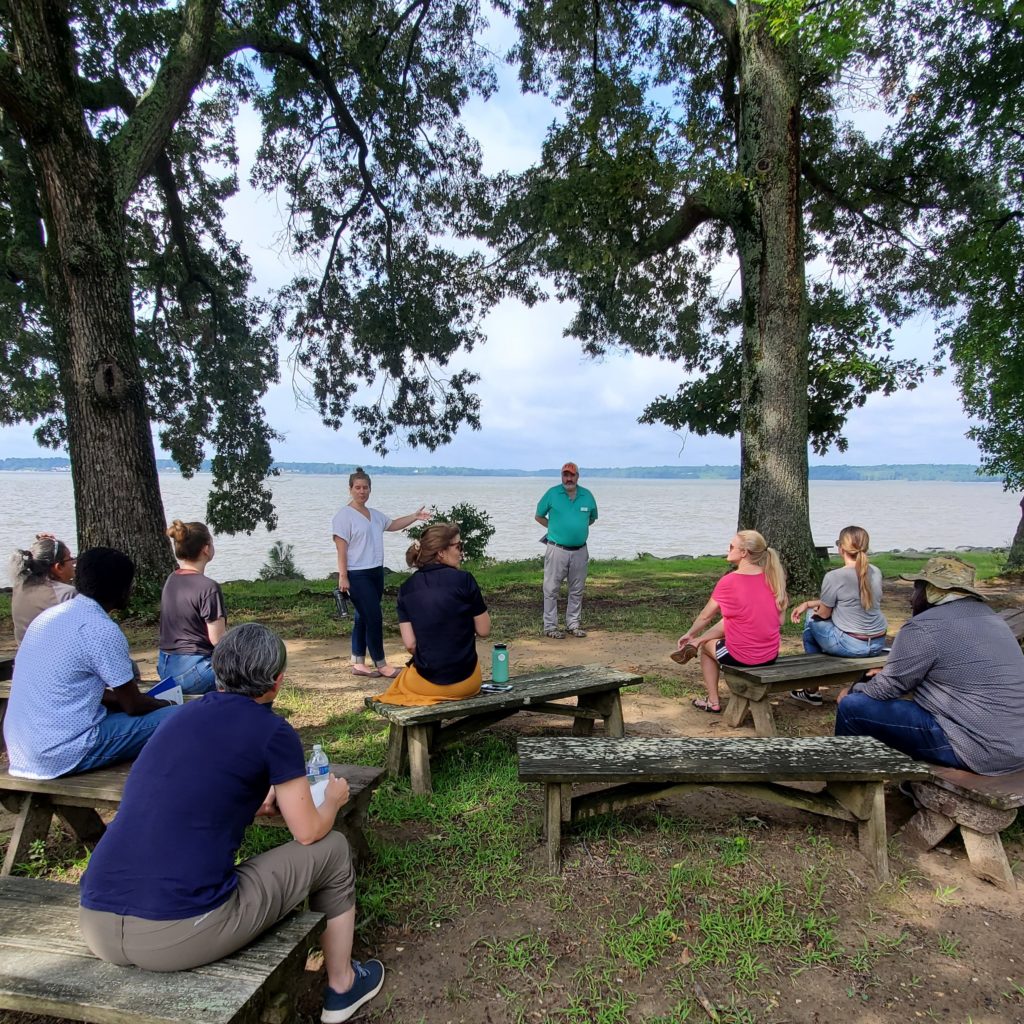
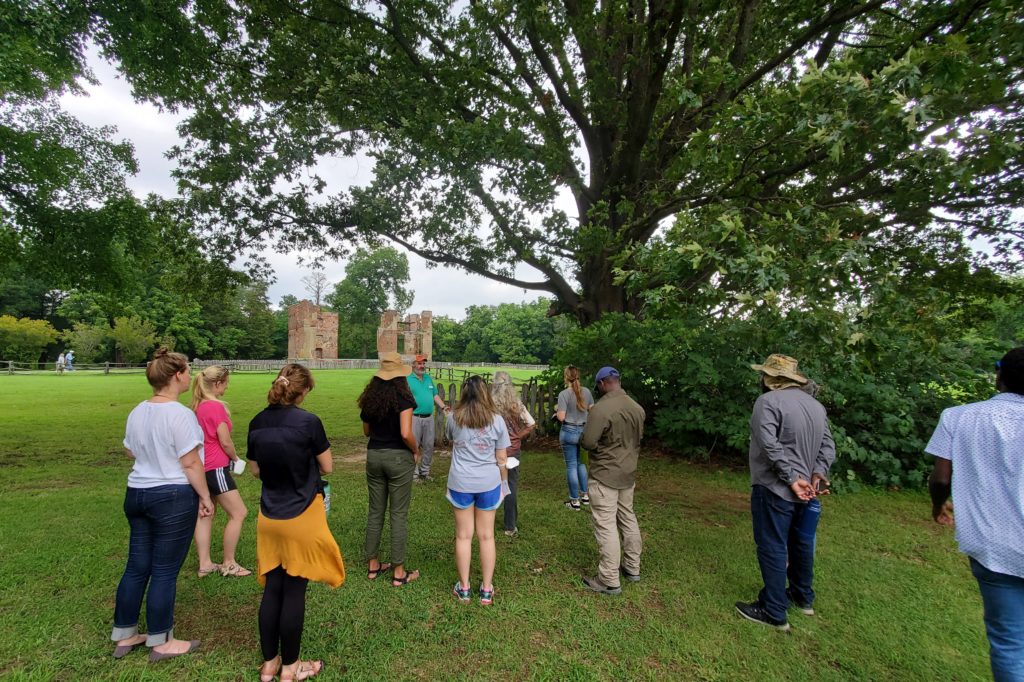
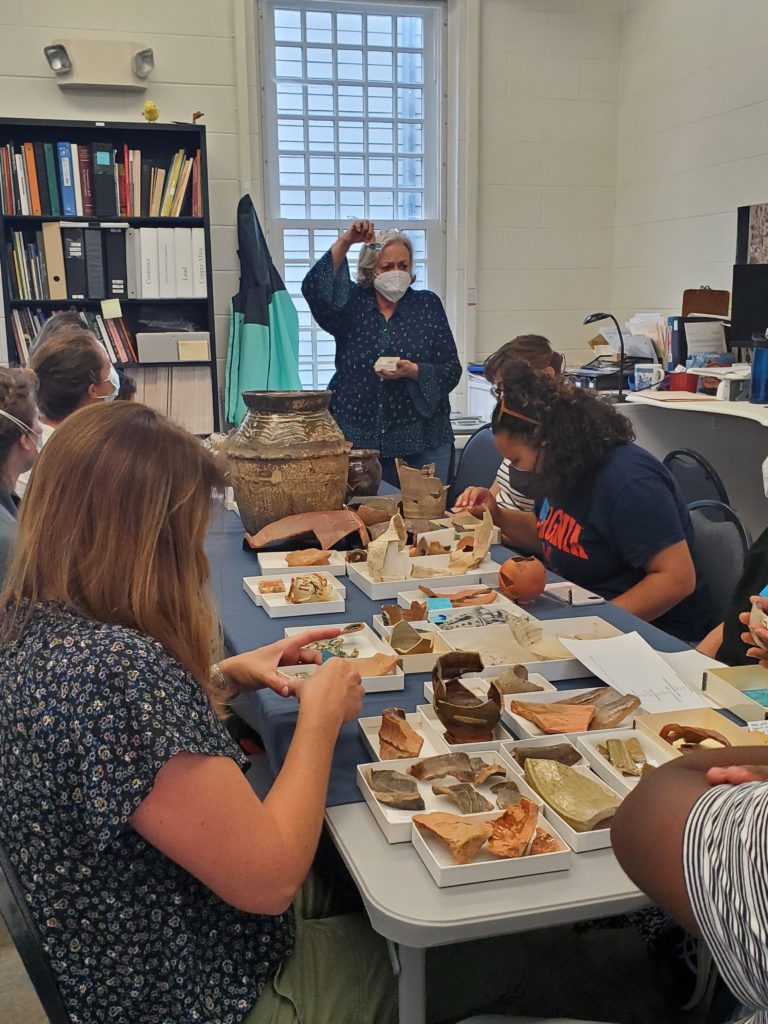
After our tour, we met with Senior Curator Merry Outlaw to learn about early 17th-century ceramics and glass. The DAACS database typically includes sites dating to the 18th and 19th centuries. Recently, however, DAACS catalogers have expanded that timeline to include earlier sites, including material recovered from archaeological sites at Flowerdew Hundred, property owned by Virginia Governor Sir George Yeardley. Yeardley was one of the first English slaveholders in Virginia and African individuals were known to be living at Flowerdew. The material excavated from these sites, soon to be accessible through the DAACS website and database, have the potential to highlight what life was like for some of the first Africans in British North America and illuminate the complicated relationships between enslaved Africans, indentured and wealthy European landowners, and Virginian Indians. Social and economic changes that influenced and stratified the community as a whole are also part of the archaeological research investigated through excavation and analysis of material culture at Jamestown.
Collaborative work in archaeology is one of the best things about our field. Different perspectives, knowledge of specific facets of material culture, and individual experiences contribute to a fuller and more nuanced interpretation of our sites and the data we collect and curate. When we can discuss our findings and hypotheses together, our research is only made stronger. Jamestown was a complex place, and the social, economic, and environmental dynamics experienced by people here in the early 17th century were not contained to the island and the period of 1607-1624. While it was a site of many “firsts”, there are threads connecting Jamestown and its inhabitants to many other sites in the Mid-Atlantic and Caribbean regions. Finding these connections and collaborating with our colleagues who ask similar questions about the beginnings of our nation and how history shapes our world today is important to understanding both our past and our present.
Leah Stricker, Curator


